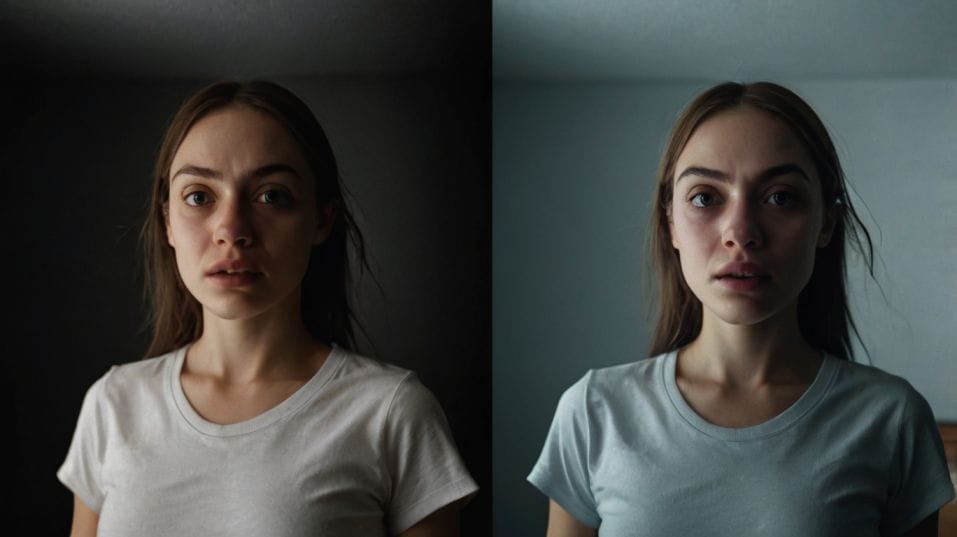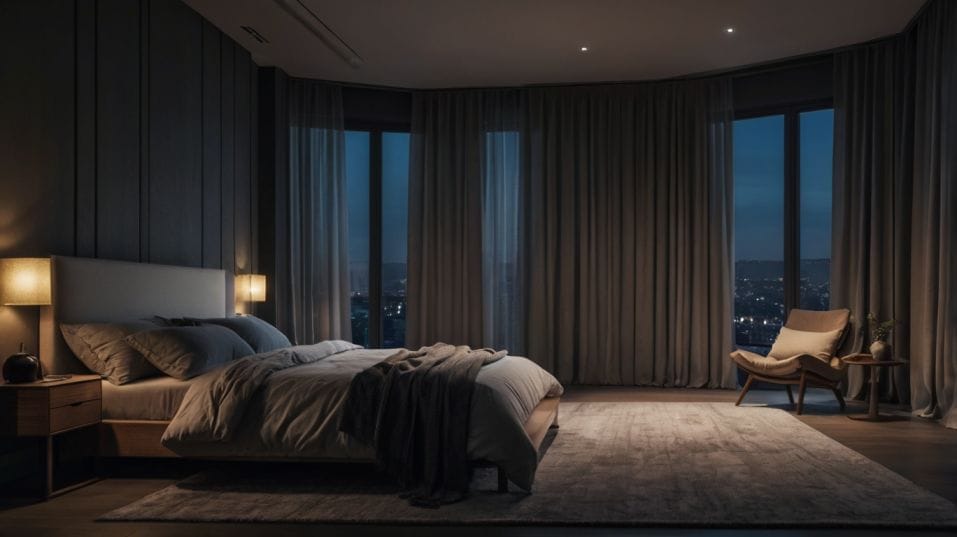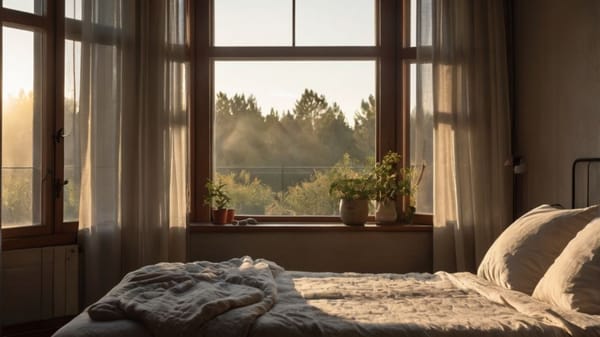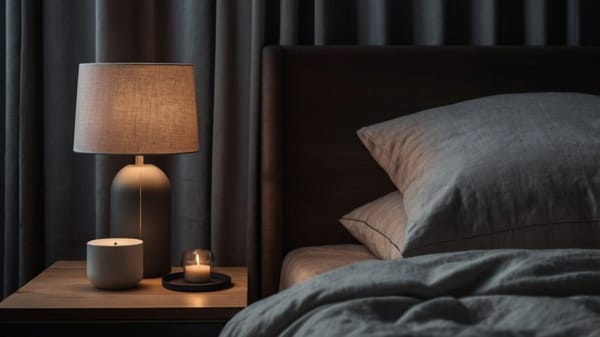The Difference Between Light Sleepers and Insomniacs
Struggling with sleep? Learn the real difference between light sleeping and insomnia so you can build smarter habits for deep, effortless rest.

Have you ever wondered why some nights every little sound yanks you awake, while other nights you lie there, wired and wide-eyed? Sleep struggles feel confusing, but they aren’t random.
Light sleeping and insomnia are two different challenges—and knowing which one you're facing is the first step to real, lasting sleep upgrades.
You don’t need complicated routines. You need the right habits tuned to the right problem. Let’s break it down simply and clearly.
What It Means to Be a Light Sleeper
Light sleepers wake up easily, often from noises, movements, or changes in the environment that wouldn't faze others.
If your sleep feels fragile, if you stir at the slightest creak, you're operating in the lighter phases of the sleep cycle more often than you should be.
Sleep cycles run in roughly 90-minute loops. You move from light sleep (N1 and N2) into deep sleep (N3) and then REM sleep.
Light sleepers tend to hover longer in those early phases. Their brains are still running environmental checks, scanning for danger like a sentry on night watch.
This isn’t broken biology. It’s old programming. In the wild, being too dead-to-the-world could mean missing the growl of a predator or the snap of a branch.
Evolution favored light sleeping in certain situations. But in modern life, where your "predators" are more likely the buzz of your phone or the rumble of a garbage truck, this wiring can backfire.

Luckily, light sleeping responds well to smart environmental control. You're not trying to force yourself into unconsciousness. You're training your brain to feel so safe, so undisturbed, that it lets go naturally.
Start with noise: use a consistent soundscape like a white noise machine or a low, humming fan.
Random sounds trigger wake-ups; steady sounds fade into the background and protect your brain from "micro-arousals" that sabotage deep sleep.
Then tackle light: black-out curtains, zero electronics glow, even covering that little LED on your charger can make a difference. Light bleeds into your closed eyelids, signaling your brain to stay alert. Dark equals safety. Dark equals deeper sleep.
Temperature matters, too. Cooler rooms (around 65°F or 18°C) cue your body to release melatonin and slow its systems down. It’s not about being cold; it’s about signaling “time to power down.”
With a few of these tight dials turned the right way, light sleepers often experience a massive leap in sleep quality—without needing drastic lifestyle changes or complicated routines.
What It Means to Struggle With Insomnia
Insomnia runs deeper than being easy to wake.
If you're lying awake for hours, waking up in the middle of the night feeling wide-eyed and wired, or dreading bedtime because you know it's going to be a battle—you’re dealing with a different animal.
At the root of insomnia is hyperarousal. Your nervous system is stuck in a state of alertness. Heart rate slightly elevated. Cortisol levels mistimed. Brain buzzing when it should be idling.
You don't beat insomnia by "trying harder" to sleep. You beat it by getting your body and brain to stop treating nighttime like a crisis.
Chronic stress, too much caffeine, irregular sleep schedules, and even mentally fixating on sleep problems can all keep you locked in this hyperactive mode.
Insomniacs often train themselves into worse patterns by over-focusing on sleep hygiene checklists, stressing over whether they’re “doing it right,” and trying to force sleep like it’s an exam they need to pass.
But recovery starts simpler than most people think. It’s not about controlling sleep minute-by-minute—it’s about rebuilding trust with your body's natural processes.
The foundation: Wake up at the same time every day, even if you didn’t sleep well. This locks in your circadian rhythms, teaches your brain when to expect darkness, melatonin, and downtime.
In the evenings, keep things deliberately boring. Dim the lights. Turn off stimulating media.
Give your mind a "signal" that nothing important is happening. You’re not trying to distract yourself into sleep; you’re letting your arousal levels coast downward.
If you can’t sleep after 20 minutes, get up. Sit somewhere dim. Read something neutral (not a thriller). Resist the urge to turn on your phone.
Don’t frame it as "failure"—frame it as a reset. You're teaching your brain that bed equals sleep, not frustration.
Physical movement helps too. A consistent, daily walk—especially in morning sunlight—resets your internal clock like almost nothing else.
Sunlight slaps your circadian rhythm back into place, lowers evening cortisol, and raises melatonin naturally later on.
It’s less about "sleep tricks" and more about living the kind of steady, unstressed day that sets you up for an easy, effortless night.
How to Tell Which One You Are
Think about your nights: Do you fall asleep easily, but wake up to every little noise or movement? You’re probably a light sleeper.
Or do you struggle to fall asleep, wake up at odd hours feeling wired, and feel like your bed is a battleground? You’re wrestling with insomnia.
Knowing which side you're on gives you clarity. Light sleepers benefit the most from controlling their environment and their external triggers.
Insomniacs need to address their internal states—calming their nervous system and resetting their relationship to sleep itself.
No matter which one you are, the goal stays the same: deeper, better, more reliable sleep that fuels your energy, your recovery, and your ability to show up fully to your own life.
Final Thoughts
Light sleepers need quieter, darker, cooler spaces. Insomniacs need calmer, more rhythmic lives. Both can build incredible sleep resilience with small but intentional changes.
Don’t overcomplicate it. Don’t overthink it. You don’t need a total life overhaul. You need a few smart dials turned the right way—then consistency, patience, and the trust that your body already knows how to sleep once you get out of its way.
Start tonight. Choose one small shift. Black out the room. Move your last coffee an hour earlier. Take a slow walk in the morning light.
Stack simple wins. Watch the momentum build. Your best energy, your sharpest mind, your fastest recovery—all of it starts with the next good night’s sleep you decide to make happen.




